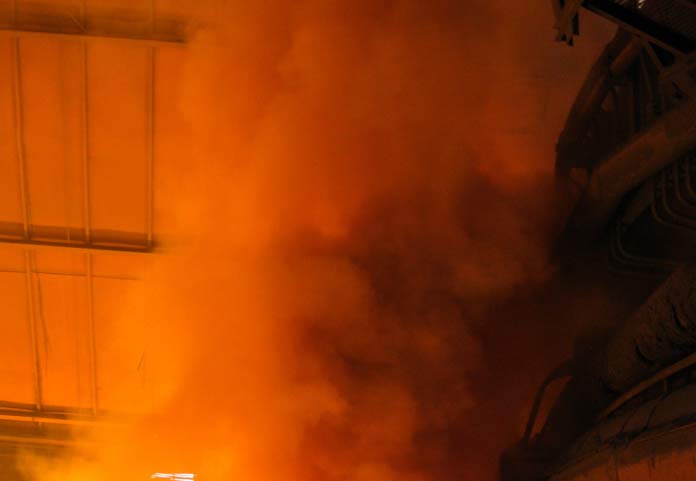In 2016, the number of grain dust explosions hit a 10-year low, but fatalities were reported for the first time since 2013, according to a new report from the Purdue University’s Department of Agricultural and Biological Engineering. Five grain dust explosions last year resulted in eight injuries and three fatalities.
Grain dust is highly combustible and, when ignited by a spark from sources such as static electricity, friction in machinery, or overheating parts, it acts as fuel for fires and explosions that can be deadly. Preventing the buildup of grain dust in feed and grain mills and grain elevators is key to reducing the risk of fire and explosion.
“The two most important factors in preventing an explosion are keeping the facilities clean and the equipment in good working condition,” said Kingsly Ambrose, assistant professor of agricultural and biological engineering at Purdue. “If the facility is clean, then the amount of potential fuel is minimized. If the equipment is in good working condition, there is less chance of ignition.”
In 2016, two of the explosions occurred in grain mills, two were in grain elevators and one was in a feed mill. The five annual explosions were down from the total of eight that were reported in 2015 and well under the 10-year average of 9.2 per year. But one incident in Georgia and one in Indiana involved fatalities.
JCG Farms Explosion in Rockmart, GA
In February 2016, an explosion at JCG Farms chicken feed mill in Rockmart, Georgia killed a 25-year-old man and injured five others. The U.S. Department of Labor’s Occupational Safety and Health Administration (OSHA) found that the company had violated safety standards that could have prevented the explosion which occurred when an excessive accumulation of grain dust ignited.
OSHA issued citations to JCG Farms of Alabama LLC, doing business as Koch Farms of Collinsville, A to J Electrical Services and D. Sims Inc. for 23 safety and health violations.
“It is tragic that despite wide industry awareness of these hazards, that some employers remain unaware of the common hazards of combustible dust,” said Christi Griffin, OSHA’s area director in the Atlanta-West Office. “This incident and this man’s death were preventable. JCG Farms needs to take a proactive approach in their safety and health program to assess the workplace for hazards and correct them to ensure worker safety.”
OSHA cited JCG with 15 serious and five other health and safety violations including:
- Exposing employees to fire and explosion hazards due to the build-up of combustible dust.
- Failing to post signs warning workers of fire and explosion hazards.
- Exposing workers to the risk of being caught in machinery.
- Failing to develop or implement an emergency action plan.
- Failing to provide training to employees on how to recognize hazards associated with combustible dust.
- Failing to implement a written housekeeping program to reduce the accumulation of grain dust.
- Exposing workers to electric shock hazards.
Tate and Lyle Explosion in Francesville, IN
A grain elevator explosion at Tate & Lyle in Francesville, Indiana on September 26 killed two men. Timothy Reidelbach, 57, and Glen Tiede, 67, were suffered severe burns and were airlifted to the Parkview Hospital burn unit in Fort Wayne. Both men later died.
The news video below was published the day of the explosion.
The Indiana Fire Marshall, NIPSCO and Tate & Lyle have since determined that a dust explosion was triggered by a “catastrophic failure of the downward leg.”

